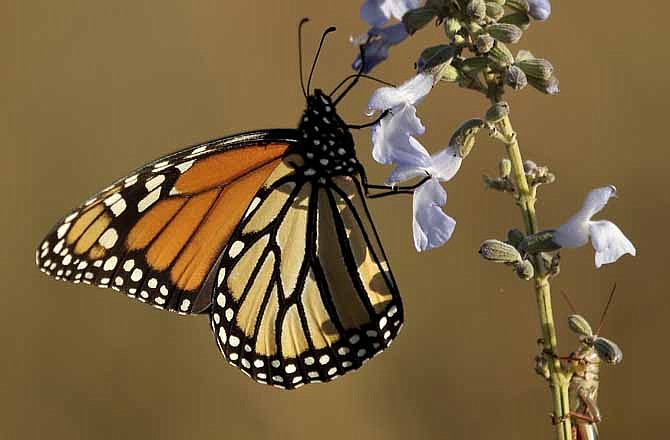Migrating monarch butterflies are facing especially dire conditions this year as they pass through the Midwest on their yearly migration to northern Mexico.
Chip Taylor, director of Monarch Watch, said that in a normal year, butterflies visit a lot of flowers as they migrate south from their summer range, which stretches from New England to the Dakotas.
The University of Kansas ecology and evolutionary biology professor said the monarchs survive the winter by living off the fats they consume on the way to the woods west of Mexico City.
But this year, their path will take them through Texas, where much of the vegetation has dried up in the hottest summer on record. And many of the surviving plants were burned in wildfires that have blackened millions of acres.
The Kansas City Star (http://bit.ly/oK2Lfh) reported that Taylor described it as "a thousand miles of hell - a nearly flowerless/nectarless and waterless expanse."
Taylor said the number of monarchs has been declining and he fears this year's conditions won't help. He wondered how many monarchs will make the fall trip safely but arrive too skinny to survive the winter or reproduce on the return trip north.
The monarchs that begin the return trek around March will lay eggs in Texas, Oklahoma and Kansas before dying off. The offspring that emerge will keep moving north through April and May, all the way to Winnipeg, Canada. A subsequent generation will fly back to Mexico.
"Here, we can produce three to five generations in a hot summer," Taylor said about the central Midwest, "but only the last generation heads south."
Since spring, Taylor had predicted the numbers starting the march from the East Coast would be low. However, he was disappointed by the counts from the Great Lakes Midwest, an area that stretches from Ohio to Wisconsin. The only bright spots were the eastern Dakotas and western Minnesota, but overall populations are low.
Tagging in Texas will give Taylor a better sense of the survival rate over the last 500 miles.
He said the dry conditions just exacerbate a major problem for monarchs - less milkweed. The plant is growing less commonplace as farmers increasingly use herbicide-tolerant corn and soybeans.
"All the scenarios I see going forward," Taylor said, "it's hard to see a positive one."

